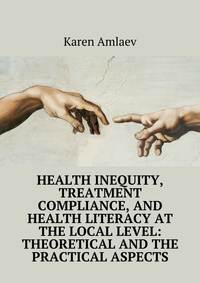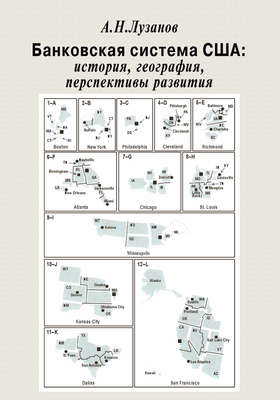Loe raamatut: «Health inequity, treatment compliance, and health literacy at the local level: theoretical and practical aspects»
© Karen Amlaev, 2015
© Vlad Babayants, translation, 2015
Created with Ridero
Foreword by the leader of the WHO Healthy Cities project
Healthy Cities since its inception 25 years ago has put a strong emphasis on equity and strategies and interventions aimed to support individuals and communities have more control on decisions and developments that affect their health and wellbeing. Health literacy is increasingly recognized as a very promising domain of public health and health promotion. It is an important component in our strategies to promote empowerment and community resilience.
Translating theory and evidence into local practice can be challenging. Concepts need to be expressed and understood in professional terms that are used locally. Recommendations and frameworks for action need to be adapted to local political and organizational contexts and realities. The support of local academic institution can be vital in such efforts.
The monograph at hand prepared by Karen Amlaev, Member of the European Advisory Committee, Professor of the Stavropol State University is a good example of an endeavour to address equity and health literacy in Stavropol, linking theory and evidence with situation analyses and action plans.
I should like to congratulate professor Karen Amlaev for this initiative and his commitment to supporting the Stavropol Healthy Cities project and the work of the Russian Healthy Cities network and beyond.
Dr Agis TsourosDirectorDivision of Policy and Governance for Health and Well-beingWorld Health Organization’s Regional Office for EuropeCopenhagen
Introduction
The project Healthy Cities has been making its contribution to health promotion in the European Region for several decades now. The peculiar feature of it is proper response to the issues arising in public health and healthcare systems in European countries. This is reflected in the topics that are taken as key ones at certain stages of the Healthy Cities project.
The Russian Federation has been an active member of the European network of Healthy Cities and dozens of Russian cities have joined our movement in the latest years.
The monograph presented here focuses on relevant issues of modern healthcare – health inequity, low health literacy and treatment compliance.
Health inequity has become one of the key priorities for the European Strategy 2020. Even though the health status indicators, such as the death rate, are improving all over Europe there are still sharp health differences between countries, inside countries, and even between cities and social groups. Unfortunately, health inequity is increasing the global economic recession being among the key causes here. The growing unemployment and cut budgets on public needs will affect millions of people’s living conditions in Europe, and will have the greatest impact on the health status of the most vulnerable groups. Should there be no timely and proper measures taken this health inequity may only increase.
The issues of low health literacy and treatment compliance, even though seemingly belonging to a different area, yet are indirectly linked to the issue of health inequity. It is obvious that improving literacy among the population in general and especially among its most vulnerable groups (socially disadvantaged) would add to the local community resilience against the socio-economic negative effects of the crisis, as well as contribute to the reduction of health inequity.
On the other hand a higher level of health literacy will improve patients” treatment compliance, which allows gaining better results in terms of improving people’s health status with no financial cost. Our research demonstrates that the compliance among the vulnerable groups (low-income and those with a low level of education) is poorer than among other groups. This means that improved health literacy and treatment compliance would also promote reduction of health inequity.
This entire range of issues with their potential solution is reflected in this monograph. The book offers a theoretical overview of the current state of the issue as well as provides the author’s own findings and the experience of the City of Stavropol gained due to the participation in the Healthy Cities project. This monograph would make a good reading for politicians and specialists representing various professional areas (healthcare, education, etc.) whose activities have an impact on people’s health in any way.
Health inequity
The current state
Health inequity: political and social aspects
Literature will often use the term HEALTH INEQUITY as a synonym to HEALTH INJUSTICE. However, these terms are not similar. Since health inequity is a general term typically used to define differences, changes, and disproportions in the health status of individuals and groups not any health inequity will be unjust. Yet, many types of health inequity are undoubtedly unjust as the concept of health injustice focuses on distribution of resources and other processes that drive certain types of health inequity, i.e. on systematic disparities in terms of health (or in its social determinants) among various social groups enjoying more or less favorable opportunities. In other words it focuses on health inequities that are unjust and unfair.
Speaking of the English terms “inequality” and “inequity” that are used to define “disparity”: in healthcare the expression social inequalities in health imply the same disparity [just like social inequities in health], which is unfair and unjust” (Whitehead and Dahlgren, 2008).
Some researchers suggest a definition based on which unfairness in health will be related to those health disparities that are considered avoidable, removable, unfair and unjust (Braveman P. et al, 1996, 2001; Newton K.,1997; Anand S., 2002; Whitehead and Dahlgren, 2008).
Health inequity is increasing both inside countries and among them. Besides, in all countries there is a large gap in terms of health status dividing various groups irrespective of their income. In high income countries there can be observed a more than 10-year life expectancy gap between various groups depending on such factors as the ethnicity, gender, social & economic status, and the geography of residence. In poor countries all regions show significant difference in child death rate depending on the household welfare.
Socio-economic conditions (social determinants) have a significant impact people’s health through their entire life-span. People with lower income demonstrate at least twice the likelihood of developing a serious disease or premature death if compared to those with high income. Besides, the social disparities in health status, which could be called the social health gradient, can be observed through all the stages of the social ladder and go beyond the low-income group. In particular, even in the middle class those with lower positions contract diseases and die more often than their colleagues holding higher positions (Whitehead M., Dahlgren G., 2008).
When viewing the behavioral factors – either positively or negatively affecting health – we shall come across numerous undeniable facts showing that poorer (from socio-economic point of view) groups usually demonstrate poorer nutrition, lower physical activity at their spare time, have a higher level of tobacco use or some other alcohol-related behavior patterns that seriously affect health. Special literature available reflecting the findings received from qualitative research into poorer groups” living conditions and lifestyles, serves evidence that such people have more restricted choices in terms of healthy lifestyles, which is due to the limits on their time, space, and money available to them, and could also be accounted for by the psycho-social mechanisms influencing them. All this is aggravated with the difference in access to goods, conditions and services, which could prevent or reduce the health damage from the socio-economic factors. For instance there are differences about access to the major medical care and their quality when we talk of various groups of the society, where healthier and better-off groups enjoy more of that access. The same holds true both for preventive services and for treatment (Whitehead and Dahlgren, 2008).
The economic standpoint contains reasons showing that such healthcare disparities result in huge loss and waste of human resource, which could otherwise be used both for individual prosperity and for the society at large.
Health inequity means that a significant part of the society has no chance to reach their full health potential, and this cuts them from access and a chance to enjoy other basic human rights. The conclusion here implies that the society should be equal and fair in distributing the resources available so that to make these accessible for everyone (Whitehead, M. et al., 2008).
Socio-economic factors are meaningful factors in health inequity. This assumption is based on the ideas of the mechanisms connecting health and socio-economic inequity. In some cases such mechanisms are rather obvious while in other cases they are more complicated and are not so visible from the surface. Thus, the level of income determines the differences in living standards – the quality and the quantity of the goods and services consumed. This, first of all, affects the nutrition calorie content, food diversity and balance, protective and sanitary-hygiene features of the clothes and footwear, as well as the comfort and convenience of the living micro-environment. Differences in the living conditions develop unequal capacities to adjust and to cope with physical and emotional stress. Inequity in living conditions determines unequal access to efficient ways of coping with health disturbances. Such mechanisms of socio-economic inequity “rubbing off” onto health is linked to the hypothesis stating that the relationship between the health and the socio-economic status could be expressed through the interconnection of “better economic status – better health status”. The health status is subject to the influence of individual behavior – smoking, alcohol, poor or imbalanced nutrition, and lack of physical activity. The differences in health status that are due to lifestyle shall be unfair when the choice of the lifestyle is restricted with socio-economic factors never directly depending on the person himself. For instance, poorer (from the socio-economic viewpoint) groups have been shown to tend to adopt behavior patterns posing potential threat to their health (Тапилина В. C., 2004).
The findings from a number of European research projects suggest that the death rate among those found at the “lowest” rank of the social ladder is typically 2–3 times as high, while the life expectancy in non-qualified employees is 5 years shorter if compared with qualified personnel; also there is a 9—12-year gap between the poor and the well-off in terms of their life expectancy free from any disabling condition (Anand, 2002; Mackenbach, Kunst, 1997; Marmot, 2004).
Studying social inequity in health and its change over time is one of the key areas in the modern research into the sociology of health. Such research will help deeper comprehension of social mechanisms in the development of health and how much health inequity is due to economic and social changes that the society faces; this will also bring about the idea of the trends – either increasing or decreasing – in health inequity between different social groups. Such research projects are of great importance in terms of developing a social policy aiming at better public health, as well as of assessing the efficiency of the currently implemented measures (Anand, 2002; Mackenbach, Kunst, 1997; Marmot, 2004). According to the documents of the leading international organizations (World Health Organization, WHO, 1990; Braveman, Pitarino, Creese, and Monash, 1996) the nowadays policy of public healthcare is based on the concept of health as a specific public benefit the access to which should be determined following the principles of social justice. This implies equal opportunities in getting the key health resources for people representing various social groups. The implementation of this requirement would involve special attention towards the groups whose status is less favorable compared to others (Anand, 2002).
Mention should be made here that a policy aimed at reducing the health-related burden in low-status social groups will not just meet the justice principles, yet it will also contribute to significant improvement in the population’s health in general (Mackenbach, and Kunst, 1997).
Even though the latest decade has seen measures to reduce inequity taken across Europe, there are still many countries with a growing concern that the disparities and inequities are expanding, which is especially obvious in the Central and Eastern Europe where the phenomena in question have adopted in this century an unprecedented scale if compared with other industrial countries. In some countries (the Russian Federation being one of them) where the worsening general health status in people is a common fact, the increasing inequity and disparities are a dramatic consequence of severe socio-economic shock. However, even countries with a good state of things in healthcare (e.g. Denmark, the Netherlands, and Sweden) also demonstrate significant evidence of retaining and even increasing inequity, which puts them, too, among the top concern objects from the point of view of public healthcare. The differentiated aggravation of women’s health, in particular in those belonging to vulnerable social groups, has become an issue that is attracting more and more attention from policy-makers in those countries. In some countries there is direct evidence of health inequity depending on the ethnicity. The findings received from the United Kingdom as well as from other places suggest that this is largely a result of the poor socio-economic conditions of certain ethnic groups.
Inequity and injustice are quite different and vary from area to area in different periods of time, which is evidence to the fact that they are not fixed and inevitable and could, actually, be altered. The best results gained or underway in a particular country should become a sample and a guide for other countries in their attempt to reach achievable aims in improving their people’s health.
Social inequity in health is systematic health disparities in various socio-economic groups. This inequity is socially determined (and, therefore, is changeable) and is unfair. Such a judgment of justice is based on the common principle of human rights. There are facts showing that there is huge (and still increasing) social inequity in Europe nowadays, at least as far as relative criteria are concerned (Whitehead and Dahlgren, 2008).
The range of socio-economic inequities is wide: gender– and age-related, educational, race-ethnic, professional, power-related, material– and property-related, territorial, etc. And way, socio-economic inequities violate the principle of social justice. In this respect the concept of social justice could be analyzed.
Social inequity has existed for the entire comprehensible human history. Even though inequity has always been subject to destructive criticism and has never been approved, yet people through history have demonstrated extreme resistance to any “ideal” society based on social equity and absence of suppression among groups.
There is special concern over social inequity when it comes to children’s health. During that the report on health inequity, including the issues of qualitative assessment of gender, age, geographic, and socio-economic factors influencing health disparities, contains data on the health status of adolescents aged 11, 13, and 15 in 2005–2006 representing 41 countries and the WHO’s European region and North America. The purpose of the report was to detect the actual differences in youngsters” health status, and provision of information that could be useful for the development and implementation of specific programs, also contributing to improving young people’s health at large.
This research has produced convincing evidence showing that despite the high health status and well-being in young people many of them still have severe issues related to overweight and obesity, low self-esteem, dissatisfaction with their life, and substance abuse (Whitehead M., Dahlgren G., 2008; C. Currie, S. N. Gabhainn, E. Godeau, C. Roberts, R. Smith, D. Currie, W. Picket, M. Richter, A. Morgan, V. Barnekow, 2008).
The World Health Organization has developed an ambitious program Health for All, which targets at a 25 % reduction of health inequities both inside countries and among them by the beginning of the XXI century (World Health Organization, Targets for Health for All, 1990). However, given the results obtained from numerous research projects the WHO European Bureau once again has defined the European targets for health inequity reduction.
HEALTH-21: European target 1 – Solidarity for health in the European Region.
By the year 2020, the present gap in health status between member states of the European region should be reduced by at least one third.
HEALTH-21: European target 2 – Equity in health.
By the year 2020, the health gap between socioeconomic groups within countries should be reduced by at least one fourth in all member states, by substantially improving the level of health of disadvantaged groups.
HEALTH-21: European target 3 – Multisectoral responsibility for health.
By the year 2020, all sectors should have recognized and accepted their responsibility for health (Whitehead and Dahlgren, 2008).
Prior to dealing with the prominent health inequity there should be an understanding of its major causes and health inequity manifestations.
Complete and proper understanding of how inequity develops – be that in terms of income or health – as well as what factors influence the process, how these inequities are related, and finding ways to reduce the inequity down to a socially acceptable level – all these are important premises for the development of an efficient socio-economic policy (Кислицына О. А., 2005).
The most vulnerable to inequity groups still remain the youth, women, retirees, and low-qualification workers. Along with poverty and beggary (sometimes referred to as deep poverty) there is also disadvantage. This typically affects children, the disabled, retirees, representatives of another race or ethnicity, and the chronically poor.
A society may eliminate absolute poverty, yet there is always some relative. This is because inequity will inevitably accompany complex societies. Therefore, relative poverty will always be present even if the living standards for all the groups of a society have gone up.
The relation between the death rate and the income, the likelihood of a shorter life expectancy develops due to long accumulation of negative impacts from financial hardships and the emotional reactions linked to them. An individual’s health status is largely determined by the social group this particular person belongs to. A preliminary analysis of the relation between health inequity and economic status shows that towards various health indicators there is both inverse (higher status – fewer diseases) and direct relation. The position held by an individual in the social hierarchy – no matter how it may be defined – through job, level of education or income is always the determining factor both for the health status, and for the prevalence of behaviors that are destructive for health. The issue of social determination of health has been widely discussed by Russian authors (Назарова И. Б., 2007; Русинова Н. Л., Браун Дж., 1997; Журавлева И. В., 1999, 2006; Русинова Н. Л., Панова Л. В. Сафронов В. В., 2007).
They showed in their research that people employed in areas with lower status and low income more often demonstrate stress symptoms. Stress can act as an effect modifier. This means that in case of comparable levels of harmful impacts those experiencing stress are more susceptible to diseases and accidents. We should also keep in view the extra effects of behavioral stress manifestations, such as smoking, alcohol abuse or violence.
An empirical illustration of interrelation between health inequity and income inequity is, for instance, the data on differentiation of the medium number of health deviations in various groups of subjective economic status. The highest number of health issues has been registered in the groups with the lowest economic status, and the number will decrease as the status of the group grows.
A similar relation between health and the objective economic status can be seen in case of some specific diseases, blood circulation issues in particular. The highest concentration of those who suffered myocardial infarction can be seen among the population with the lowest status, and this number of infarction occurrences goes down as long as the subjective economic status goes up (Blaxter, 1990; Marmot, Stansfeld, Patel, North, Head, White, Brunner, Feeney, Marmot, Smith, 1991; Wilkinson 1992; Adler, Boyce, Chesney, Folkman and Syme, 1993; Marmot, 2004).
The role of economic factors in health inequity
The dependence of health from the objective economic status is also an illustration of the type of health issues.
First, it shows a higher concentration of people with low income among those with high or very high likelihood of health loss: groups of those unable to maintain self-care and suffering from limited physical capacity include the elderly. In other words, inverse relation between the objective economic status and the health status is mostly typical of the elderly and the oldest groups of the population, which supports the hypothesis concerning the fact that the development of a stable negative relation between health and economic status is largely subject to the factor of accumulating the negative impact from financial hardships and their consequences over a long time. Second, there is direct relation between chronic diseases and the economic status. A complementary analysis of the relation in view of the age factor among people with various incomes also shows that the poor have a higher share of those suffering from diagnosed chronic diseases in all age groups, if compared with similar age groups with the maximum income. As for acute communicable diseases both the poor and the rich are equally vulnerable to them, with the middle class demonstrating a lower level of vulnerability.
The distribution of the different age population suffering from health issues in the groups of the subjective economic status also suggests that in the young age (or in the first part of life) the share of people with detected (diagnosed) issues is growing along with the subjective economic status growth. Yet, there is a tendency seen in those approaching the end of their age: the higher subjective economic status the higher concentration of people with health issues.
People who are rather well-off have significant material possibilities to get the medical assistance needed and to take care of, and maintain their own health. This could be seen, in particular, in the prevalence of preventive visits to medical institutions. Among the well-off this index is significantly higher, if compared to the disadvantaged, both in general, and within specific age and level-of-education groups (Русинова Н. Л., Панова Л. В. Сафронов В. В., 2007; Падиарова А. Б., 2009).
Thus, there has been both direct and inverse relation identified between health and the objective and subjective economic status. On the one hand, the higher economic status the more often people visit medical institutions for preventive purposes and the higher the number of those with chronic diseases detected. On the other hand, the higher economic status the lower (on average) the number of people with health issues, the lower the share of people with severe heart diseases (myocardial infarction), and the lower the share of those with significant and stable loss of health. In general the individual findings on health support the conclusions and assumptions concerning the prolonged and ongoing impact of income on health, which were done based on the analysis of socio-economic inequity and territorial differences in people’s health status. There we can see both cumulative effect where “the quantity (of money) shall transfer into quality (of health)” after a certain period of time, and the stimulating role of higher income on the ongoing health monitoring and timely response to its disturbances.
The relation between the social status and various aspects of mental issues has been of interest for both doctors and researchers since long ago; the findings from a lot of research have demonstrated the meaningfulness of social status in understanding mental diseases and disability. The epidemiological research projects conducted all over the world have shown an inverse relation between mental issues and the social class. There has been consistent data obtained suggesting that mental disturbances are more common for the lower social class (Meltzer et al, 1995). At the same time, lately there have been discovered other channels of the significant impact that inequity has on health. In particular, it has been shown that chronic stresses related to the dissatisfaction with one’s socio-economic status may result in neuro-endocrine and psychological functional alterations thus contributing to the disease likelihood. It has already become a common opinion that a longer feeling of fear, uncertainty, low self-esteem, social isolation, inability to make decisions and be in charge of the situation both at home and at work impact health seriously: this may cause depression, increase susceptibility to communicable diseases, diabetes, high blood cholesterol, and cardio-vascular issues. Low socio-economic position, therefore, impacts health directly through deprivation and financial hardships, and through the subjective vision of one’s “unequal” position in the society and the related judgment, relations, experiences. When studying the influence that the socio-economic status has on health focus should be kept on both the objective and subjective socio-economic status. Therefore, there is an undoubted connection between the financial status and health, which can be seen both from the scientific-theoretical viewpoint, and at the level of common sense (Падиарова, А. Б., 2009).
Many researchers state that low socio-economic status is associated with high prevalence of mood disorders (Dohrenwend et al, 1992). There was also a suggestion that belonging to a particular social class will influence the nature of psychopathological symptomatology in depression. Patients demonstrating symptoms of somatized and anxiety disorders more often belong to a lower social class. At the same time cognitive symptoms were more often detected in patients from a higher class. The severity of depression in adults, related to financial issues, may depend on age. Mirowsky и Ross (2001) found that it goes down as the age goes up. Financial troubles and poor marital relationships are significant factors contributing to the risk of depression onset and its chronic course (Patel et al, 2002). Just like depression, poverty is typically chronic in its nature, so it usually needs focus both from caregivers and from decision makers.
If compared to the general population people who attempt suicide more often belong to the social groups where social instability and poverty are typical.
Gunnell et al. (1995) investigated the relation between suicide, parasuicidal behavior, and socio-economic issues. They identified a connection between suicide and parasuicidal behavior, while negative socio-economic factor offered nearly complete explanation. Besides, these murders and suicides more often happen in densely populated poor areas (Kennedy et al, 1999). Crawford and Prince (1999) also support these findings. They noticed an increase in the suicide rate among young unemployed men living under severe social deprivation. It also true that the frequency of cocaine or opiate overdose cases is associated with poverty (Marzuk et al, 1997).
Both unemployed men and women demonstrate a higher level of alcohol or substance dependency in case they belong to the unemployed. The social class is a risk factor of death due to alcohol abuse, which is also related to such structural social factors as poverty, disadvantage position and the social class. The rate of alcohol-induced death is higher among men involved in physical labor than among clerks, yet the relative index will depend on the age. Men aged 25–39 and involved in common non-qualified physical labor demonstrate a death rate 10–20 times higher than representatives of the middle class, while among those aged 55–64 the same index is only 2,5–4 times higher if compared to those who are involved in a type of labor requiring special skills (Harrison & Gardiner, 1999).
The relation between the lower socio-economic status and personality disorders is far from being well-investigated. Low family income and insufficient living conditions are prognostic factors for crime among adolescents and adults (based on official and survey data). However, the connection between poverty and crime is a complex and a continuous one. The interrelation between impetuosity and the neighborhood in connection to criminal activity show that impetuosity is higher among residents of poor areas rather than among those residing in better-off ones (Lynam et al, 2000). A Cambridge research into the development of minor delinquency produced data stating that unstable employment at the age of 18 was an important independent predictor of previous conviction history among young men aged 21–25 (Farrington, 1995).











